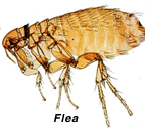Socialization
The holiday season is a common time of year when families introduce new four legged family members into the house, especially new puppies. Puppyhood is a critical time in your dog’s development. Training and socializing is laying the foundation for a great adult dog and the more you put into that foundation the better your adult dog will be for it. This is by no means a complete instruction for socializing your puppy but a guideline to point you in the right direction and spark a bit of creativity.
Most of us have grown a lot in how dogs and puppies learn. My family used the “stick the puppy’s nose in it” potty training technique, and I don’t think we even heard of socializing our dogs. Any socialization we did was purely accidental. Today, behaviorist and trainers sing the praises of socialization and it is now part of our mainstream puppy vocabulary. However, this is the area in which new puppy owners need the most help.
Socialization is defined as “a continuing process whereby an individual acquires a personal identity and learns the norms, values, behavior, and social skills appropriate to his or her social position (Dictionary.com, 2012).” Simply stated, expose your puppy to the world while teaching your puppy how to interact in an appropriate manner. You will be building a solid foundation of knowledge about the world that your adult dog will use in his daily interactions. We don’t want our brave, boisterous puppies to jump all over people when they walk in the door. Nor do we want our shy puppy to be scared of everyone that walks in the front door. Both are examples of what we may deem inappropriate interactions with house guests, and it is our job to teach our puppies the appropriate response.
Socialization can be considered controlled exposure to a stressor, which can be good or bad. Being introduced to stressors at a young age allows the puppy to learn how to deal and cope with stress. It is our job as puppy parents to help our puppies see these stressors in a good light without overwhelming them. Overwhelming a puppy during socialization can be just as detrimental as not socializing at all. Socialization does not guarantee an adult dog will not develop behavioral problems; however socialization is the best preventative medicine against them.
Researchers say that a puppy’s socialization period is from 4 weeks of age to roughly 12 to 16 weeks of age. Puppy raisers can vacuum near the whelping box, drop pans, and have people come over to play with the puppies to begin the process. After adoption some people wait until the puppy has had all of their vaccines before they even begin to socialize. However, most puppies do not receive their final vaccine until 16 weeks of age, which is the end of the socialization window. So one must be careful where they take young puppies. Dog parks or dog friendly malls that do NOT check vaccines on dogs entering might not be wise place to take your puppy. Puppies can be carried to meet people but avoid dog-dog interaction or heavily used doggie potty areas to lower your puppy’s risk. Training centers, boarding facilities, etc. that require current vaccines are a safer option for dog-dog interactions.
During puppy appointments here at Veterinary General, owners often describe socialization with their puppy as playing with household dogs and meeting people that come to the house. These puppies do well with familiar friends and family, but not necessarily new people as they grow older. They may also become anxious or overly excited when they leave the home. Traveling with your puppy to new locations will also get them used to car rides and give them more exposure to world. So, how do you socialize your puppy?
Next installment we will look at how to plan your puppy’s socialization visits to set your puppy up for success! Below is a quote, even though it is about parenting children, I feel it fits our interactions with our puppies.
“In some ways being a parent is like being an anthropologist who is studying a primitive and isolated tribe by living with them…. To understand the beauty of child development, we must shed some of our socialization as adults and learn how to communicate with children on their own terms, just as an anthropologist must learn how to communicate with that primitive tribe.”
-Lawrence Kutner







Recent Comments